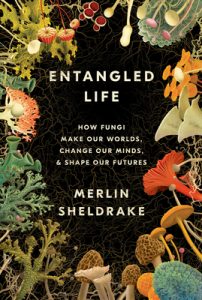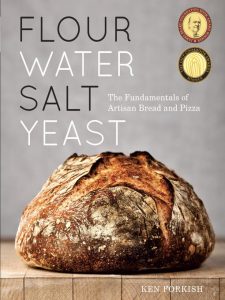 There are moments in
There are moments in
moist love when heaven is
jealous of what we on
earth can do.
– Hafiz
So the original plan was to write about sex*, but this. Dang. I’m going to quote from Sheldrake’s book again in this short span of two sentences because I cannot do him justice (though in my defence, the first quote was a quote of a quote): “This wasn’t sex: Fungal and plant cells hadn’t fused and pooled their genetic information. But it was sexy: Cells from two different creatures had met, incorporated each other, and were collaborating in the building of a new life. To imagine the future plant as separable from the fungus was absurd” (Sheldrake, Entangled Life, chapter 5: Before Roots). That’s the first quote I highlighted in the pages because it captured the excitement I felt about this book throughout my reading it, though part of why I hadn’t highlighted anything prior to it was probably because I was going along at breakneck pace.
Alright, so maybe I didn’t start off with a good combination (sex and fungal matter). So if I may just direct your attention to these following points for why you might be interested to read this delightful book on fungi (apart from the fact that it’s a book about fungi – you all know how I feel about mushrooms and their kith):
Here is a video of me eating the mushrooms that sprouted from my book, Entangled Life: How Fungi Make Our Worlds, Change Our Minds, & Shape Our Futures.
They were delicious: I couldn’t taste any off notes, which suggests that the #fungus had fully metabolised the text. pic.twitter.com/wjhLdfvU4c
— Merlin Sheldrake (@MerlinSheldrake) June 23, 2020
- The author, Merlin Sheldrake, grew oyster mushrooms out of his own book, harvested them, then cooked and ate them (@MerlinSheldrake).
- His review of the mushrooms? “They were delicious: I couldn’t taste any off notes, which suggests that the #fungus had fully metabolised the text.”
- The illustrations within the text were drawn using the ink from the shaggy ink cap mushroom (Coprinus comatus). Yes, this includes an illustration of Coprinus comatus using Coprinus comatus.
- The excellently chosen epigraphs. To give you an example, the introduction starts with the quotation at the beginning of this post. That’s bold. So is cultivating oyster mushrooms off your book about fungi. And planning to make cider of another physical copy of your book about fungi.
- What more do you want? What more do you need?
It actually gets even better. (Who’d have thought it possible?) Sheldrake is evidently in love with fungi and suffused with a curiosity about the natural world, and that passion is contagious, infecting the reader just as a mushroom might shoot its spores far out and beyond its body, through the pages, to seed in you an interest in the fungal world.**
*If this piqued your interest and you just want to read about sex and not fungi, and most definitely not about fungi and sex, then the title I was going to talk about originally was Boys & Sex by Peggy Orenstein, available as an e-book and e-audio in addition to as a physical copy. It is, perhaps ironically, decidedly less sexy than Entangled Life, but definitely an interesting read after having read its companion: Girls & Sex by the same.
**Perhaps not the best of terms to use in the midst of a pandemic.
 Chapter 5 also got me very interested when Sheldrake started talking about how, just like how you can taste the difference in homegrown tomatoes depending on a variety of factors, the fungal communities in the soil can also affect the taste of the crop you’re growing. This shouldn’t be particularly surprising, given how much give-and-take goes on between plants and the mycorrhizal communities to which they belong, but this is actually pretty awesome (in the contemporary and the olden sense of the word): “In 2013, a team of Italian researchers baked loaves of bread using wheat that had been grown with different mycorrhizal communities… Surprisingly, given how many stages occur between harvest and tasting – milling, mixing, and baking, besides the addition of yeast – both the panel and the electronic nose were able to tell the loaves apart. The bread grown with an enhanced mycorrhizal fungal community had a higher “flavor intensity” and improved “elasticity and crumbliness”” (c.5). I know there’s a population of bakers who source their flour directly from the farms that grow the wheat (or mills that mill it), purchasing either the milled flour from them or whole wheat berries to mill at home, but imagine if beyond just having different species or types of wheat to choose from, you could also have, for example, Red Fife grown with different mycorrhizal communities depending on what characteristics you’re looking for in your flour for what you’re baking? Tasting notes along with mycorrhizal community makeup listed on your local bag of flour or wheat berries, elasticity and extensibility characteristics listed, gluten percentages and ash content… I should just grow my own wheat and cultivate my own mycorrhizal communities that give me the flour I want to make the bread I’m looking for, really. But honestly I feel like there’s a dedicated and passionate enough community of bread bakers for a specialized set of flours like this.
Chapter 5 also got me very interested when Sheldrake started talking about how, just like how you can taste the difference in homegrown tomatoes depending on a variety of factors, the fungal communities in the soil can also affect the taste of the crop you’re growing. This shouldn’t be particularly surprising, given how much give-and-take goes on between plants and the mycorrhizal communities to which they belong, but this is actually pretty awesome (in the contemporary and the olden sense of the word): “In 2013, a team of Italian researchers baked loaves of bread using wheat that had been grown with different mycorrhizal communities… Surprisingly, given how many stages occur between harvest and tasting – milling, mixing, and baking, besides the addition of yeast – both the panel and the electronic nose were able to tell the loaves apart. The bread grown with an enhanced mycorrhizal fungal community had a higher “flavor intensity” and improved “elasticity and crumbliness”” (c.5). I know there’s a population of bakers who source their flour directly from the farms that grow the wheat (or mills that mill it), purchasing either the milled flour from them or whole wheat berries to mill at home, but imagine if beyond just having different species or types of wheat to choose from, you could also have, for example, Red Fife grown with different mycorrhizal communities depending on what characteristics you’re looking for in your flour for what you’re baking? Tasting notes along with mycorrhizal community makeup listed on your local bag of flour or wheat berries, elasticity and extensibility characteristics listed, gluten percentages and ash content… I should just grow my own wheat and cultivate my own mycorrhizal communities that give me the flour I want to make the bread I’m looking for, really. But honestly I feel like there’s a dedicated and passionate enough community of bread bakers for a specialized set of flours like this.
But this effect isn’t even just for wheat: Sheldrake also mentions tomatoes and strawberries have been found to be made sweeter with some fungi or juicier with others, not to mention that “some change the essential oil profile of fennel, coriander, and mint; some increase the concentration of iron and carotenoids in lettuce leaves, the antioxidant activity in artichoke heads, or the concentrations of medicinal compounds in Saint-John’s-wort and echinacea” (c.5). And given that advances in agriculture are no longer yielding significantly more crops, “despite a seven-hundred-fold increase in fertilizer use over the second half of the twentieth century” (c.5), this is certainly an exciting field of study. Sheldrake is quick to point out, however, that we still don’t know enough about how fungi interact with their environment and other organisms to figure out the best mycorrhizal mix for different agricultural crops and conditions.
This is a pattern as we continue on through the text, and as I’m writing this, I start to suspect it might be part of the reason Sheldrake has written this book: according to Sheldrake, mycology is a rather neglected field, “the study of fungi has long been lumped in with plant sciences and is seldom recognized as a distinct field, even today” (c.7: Radical Mycology). This despite how much fungi do that keeps the world moving along as it does, how essential they are to the world (not least by continuing to decompose stuff, lest we be buried in our garbage and our dead piling atop each other forevermore), and how much promise they hold to helping contribute to the solution – if not being the solution – of issues such as the decomposition of common trash like cigarette butts or baby diapers: fungi can literally take that garbage and fruit edible mushrooms from it! (c.7) (Not edibles, though possibly shrooms?)
I’m not going to cover the entire book even though I’m so tempted to, because you should really read this for yourself! We’ve got the e-book of it ready to put on hold, and have placed the physical copy on order, so put yourself on hold there as well! There were many connections to be made to other fields and topics – somewhat fittingly, for how fungi find themselves connected to a little bit of everything – and you will find yourself equally amazed and buoyed by the promise that fungi hold. For more related books, check out my previous post on mushrooms: Mycophilia.
OMG, if reading this book is even half the joy that this review has brought me (and you’ve convinced me it will!), it’s gotta go on my must-read list.
Haha I had such a fun time writing this up, buoyed by the excitement after finishing this title, so I’m really glad you enjoyed it! Let me know what you think after you’ve gotten around to it! (Whether that means you’ve grown your own mushrooms out of the book – hopefully not the library copy! – or digested the material through reading)